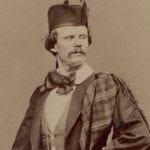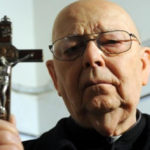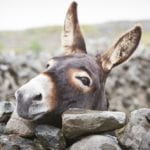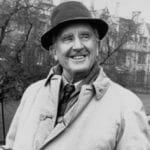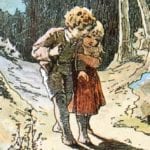 Technology
Technology  Technology
Technology  Humans
Humans 10 Everyday Human Behaviors That Are Actually Survival Instincts
 Animals
Animals 10 Animals That Humiliated and Harmed Historical Leaders
 History
History 10 Most Influential Protests in Modern History
 Creepy
Creepy 10 More Representations of Death from Myth, Legend, and Folktale
 Technology
Technology 10 Scientific Breakthroughs of 2025 That’ll Change Everything
 Our World
Our World 10 Ways Icelandic Culture Makes Other Countries Look Boring
 Misconceptions
Misconceptions 10 Common Misconceptions About the Victorian Era
 Mysteries
Mysteries 10 Strange Unexplained Mysteries of 2025
 Miscellaneous
Miscellaneous 10 of History’s Most Bell-Ringing Finishing Moves
 Technology
Technology Top 10 Everyday Tech Buzzwords That Hide a Darker Past
 Humans
Humans 10 Everyday Human Behaviors That Are Actually Survival Instincts
 Animals
Animals 10 Animals That Humiliated and Harmed Historical Leaders
Who's Behind Listverse?

Jamie Frater
Head Editor
Jamie founded Listverse due to an insatiable desire to share fascinating, obscure, and bizarre facts. He has been a guest speaker on numerous national radio and television stations and is a five time published author.
More About Us History
History 10 Most Influential Protests in Modern History
 Creepy
Creepy 10 More Representations of Death from Myth, Legend, and Folktale
 Technology
Technology 10 Scientific Breakthroughs of 2025 That’ll Change Everything
 Our World
Our World 10 Ways Icelandic Culture Makes Other Countries Look Boring
 Misconceptions
Misconceptions 10 Common Misconceptions About the Victorian Era
 Mysteries
Mysteries 10 Strange Unexplained Mysteries of 2025
 Miscellaneous
Miscellaneous 10 of History’s Most Bell-Ringing Finishing Moves
10 Strange Tales About Paranormal Research
Everyone likes a good paranormal tale. However, often the really interesting stories are not about ghosts and UFOs—they’re about the people who run after them with a notebook in hand.
The world is full of tireless paranormal researchers who spend countless hours in a never-ending attempt to understand the incomprehensible and find the truth behind the legends. These are their stories.
10William Hope And Spirit Photography
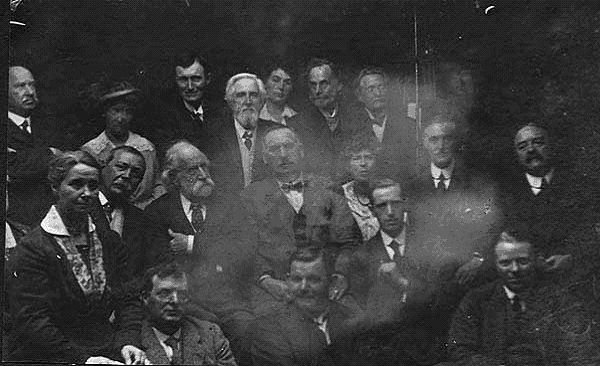
William Hope (1866-1936) was a famous British medium and paranormal researcher. He gained fame with his amazing “spirit photography,” a seemingly uncanny ability to capture the images of ghosts and spirits on camera. Although this technology is commonplace today (and, more often than not, known as “photoshopping”), Hope was the first man to produce these type of images. As such, his popularity as a medium exploded.
Hope took many precautions with the plate cameras he used in order to rule out any possibility of fraud. However, this itself turned out to be a scam. In reality, the complicated rules he claimed to follow were little more than smoke and mirrors. Hope’s pictures were actually the product of skillful photo manipulation and advanced superimposing techniques. Still, although we can’t respect him as the herald of the supernatural world he liked to present himself as, we can at least give him a nod for his work as a pioneering photography artist.
9Independent Investigations Group
The Independent Investigations Group—or IIG for short—is a famous paranormal research organization that was founded in Hollywood, California in 2000, but now operates across America. They’re the largest and best known group of their kind in the US, and their founder, Jim Underdown, is a common sight at panels and discussions around the country.
IIC takes a decidedly skeptical stance in its investigations, but it always strives to give its subjects a fair chance to prove their mystical powers. They have an ongoing offer to pay a large cash prize to anyone who can demonstrate scientifically verifiable paranormal abilities. The sum was originally $50,000, but was recently bumped up to $100,000, possibly thanks to their collaboration with the James Randi Foundation, another famous skeptic organization.
Be warned, though: It’s not easy money. The video above shows the IIC investigating Anita Ikonen, who had claimed to have the power of “medical dowsing” (in this case, telling if someone is missing an internal organ).
It didn’t go well for her.
8EMF Meters

EMF (electromagnetic field) meters are one of the most common tools in the working kit of a ghost hunter. There is some confusion as to why they are so important. Some say it’s because ghosts actually emit electromagnetic radiation, others claim they merely disturb the area’s existing electromagnetic field. It doesn’t really matter which of the theories is true—either way, the ghost hunting community often accepts the idea that ghosts and other spirits can be detected with an EMF meter.
Obviously, the use of the device presents many problems. No one really knows how to interpret the readings—whether or not ghosts are right behind them. Certain researchers have even speculated that EMF anomalies might actually cause hauntings, rather than the other way around.
Some of the more enthusiastic paranormal researchers find their way around the problem by creating complicated sets of fine-tuning instructions for their EMF meters. However, it’s pretty safe to assume that most researchers just carry their meters around and if the needle starts moving, grab their cameras and hope for the best.
7Viktor Grebennikov

Viktor Grebennikov was a Soviet scientist and naturalist with a very strange interest in supernatural—or, rather, supremely natural—methods of transport. Grebennikov’s day job was as an entymologist (insect researcher), but he liked to dabble in the paranormal. Before his death in 2001, he had amassed a large amount of research on the art of levitation, and even claimed to have built a platform able to levitate a fully-grown man.
Grebennikov’s alleged levitation techniques were based on a specific, arcane geometrical structure he claimed he had built from insect parts. This bug machine was supposedly able to lift him for over 305 meters (1,000 ft) and could easily reach speeds of over 25 kilometers (15.5 mi) per minute. He was protected from these high speeds by an energy grid all around him.
Well, that’s his story anyway. When you actually look at the video material he left behind, it looks a lot like the few bug parts he’s able to move without touching them only do so because he’s creating static electricity by rubbing the surface under them.
6Ovilus
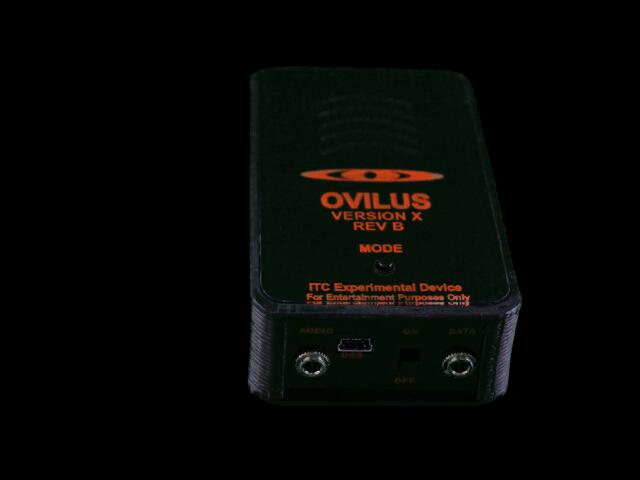
The Ovilus is a “ghost box” that has gained notoriety among paranormal investigators in recent years. It’s essentially the ghost hunter’s equivalent of a text-to-speech program. The Ovilus detects the subtle changes ghosts, demons, and other incorporeal entities make in their surroundings, and converts these messages into spoken words. It’s a dowsing rod, EMF meter, and a recording device, all in one machine. Ovilus III, the most recent model, is said to have a vocabulary of 2,000 words, along with a thermal flashlight, multiple operating modes, a recording function, and other neat extras.
As amazing as the Ovilus would be if it really worked, at least one reviewer is certain that the product is actually a fraud. Although it does have all the sensors and functions that it claims to, they do nothing to detect—let alone communicate with—ghosts. The Ovilus merely scans your environment and, when the conditions are right, the machine gives you a preset speech response from its memory.
5Fairy Investigation Society
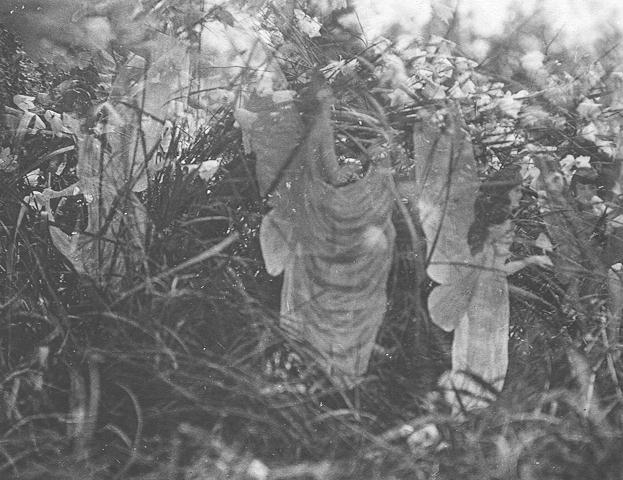
Before WWII, fairies held the spot UFOs and ghosts now have in popular culture. Thanks to the ongoing success of Peter Pan and the various fake fairy pictures that circulated at the time, public interest in these little mystical creatures was at an all-time high. The Fairy Investigation Society was a British club of paranormal enthusiasts who specialized in these strange, winged entities. Founded in 1924, the society apparently worked much in the same way modern ghost and UFO investigators do, collecting evidence, investigating reports, and researching fairy lore.
Reliable information on the Fairy Investigation Society is hard to find, possibly because WWII did no favors to public records, and post-war paranormal enthusiasts found their interests shifting toward the now-familiar aliens and ghosts. However, it appears that the society limped on until the 1970s or 1990s, when they either disbanded or went underground, depending on which source you believe.
However, it seems that recent years have seen a renewal in public interest toward the Fair Folk. The most recent iteration of the Fairy Investigation Society was launched (possibly with tongue firmly in cheek) in 2013.
4De Incendiis Corporis Humani Spontaneis
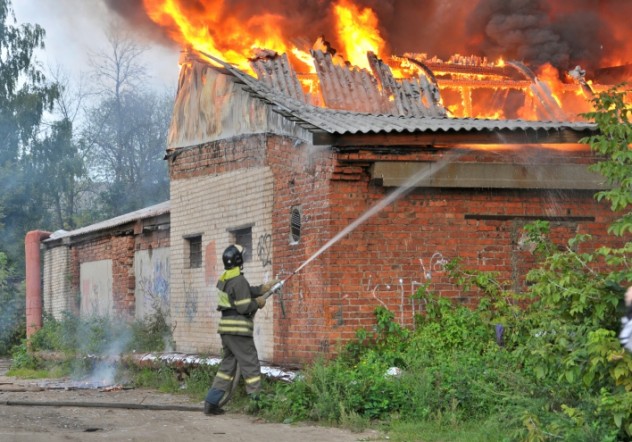
Doctor Jonas Dupont from the University of Leiden probably never had any intention of investigating the paranormal. However, researchers of the unknown fondly remember his name, thanks to his 1673 book “De Incendiis Corporis Humani Spontaneis”— the first written research on the fascinating subject of spontaneous human combustion.
Dr. Dupont encountered the mysterious phenomenon when he stumbled onto the documents of a very strange court case. The husband of a hard-partying Parisian woman called Nicole Millet had been arrested for burning his wife to death, but was acquitted when doctors instead determined that Mrs. Millet had spontaneously combusted. The woman had been burned so badly that all that was left were her skull and some finger bones, yet the straw mattress underneath her was only lightly damaged.
Dupont’s book became fairly well known, and the idea of spontaneous combustion entered the public consciousness. Some of the concepts Dupont introduced have been common in most cases of supposed spontaneous combustion ever since: The victim is often a drunk, the fire is nowhere to be seen, and it only damages the person, leaving the surroundings largely untouched.
3Maurice Grosse
Maurice Grosse (1919-2006) is one of the most famous paranormal investigators Britain has ever seen. A a charismatic individual, he was every bit the man of action that his magnificent mustache required. An engineer by trade, he became a successful inventor after serving in WWII. He entered the world of the paranormal in 1976, after his daughter was killed in a tragic motorcycle accident. Grosse started experiencing strange events that seemed supernatural in nature, and eventually joined a paranormal research society.
Just one year after he started investigating the arcane, Grosse became entangled in one of the most bizarre poltergeist cases in recorded history. The so-called Enfield Poltergeist Case was a complicated haunting that lasted for months. Grosse supported the afflicted family throughout the ordeal, staying in the house for long periods and recording every moving object and slamming door with his cameras and tape recorders.
The strangest aspect of the case was a mysterious, eerie “poltergeist voice” that resembled an old man, but spoke through the 11-year old girl who seemed to be the focus of the events. Grosse was so fascinated by this unearthly voice that he offered the then-impressive sum of a thousand pounds out of his own pocket to anyone who could reproduce it through trickery or ventriloquism. No one could.
The Enfield Poltergeist made Grosse’s name as a paranormal celebrity. He remained an active and respected member of the community until his death, taking part in active research until the very end.
2Bryan & Baxter
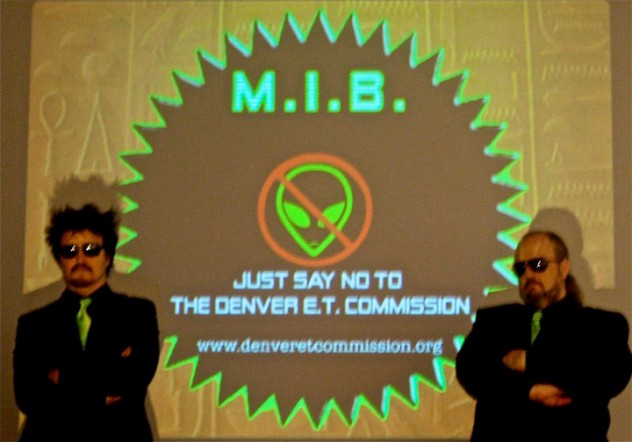
Bryan Bonner and Matthew M. Baxter, collectively known as Bryan & Baxter, are the founders of the Rocky Mountain Paranormal Research Society. Their sunglasses and matching outfits make the two radio show hosts look like fame-hungry wannabe rock stars, but the pair are actually quite serious about their craft.
Instead of the screaming and running around in cemeteries that most modern ghost hunters seem to practice, they have dedicated themselves to exposing all the frauds that litter the paranormal field. Labeling themselves as “urban myth and legend busters” and “the polar opposite of Ghostbusters,” the men are essentially the Mythbusters of the paranormal. During their years in the business, Bryan and Baxter have exposed immeasurable hoaxes, tricks, and frauds.
However, the two say they aren’t doing it to remove all the mystery from the world. On the contrary, they’re out to find the real mysteries in the sea of fake ones. The men freely confess that, every once in a while, they encounter a phenomenon they’re unable to easily explain. And until they can, well…who can prove it wasn’t a ghost that made that chair move by itself?
1The Ghost Club
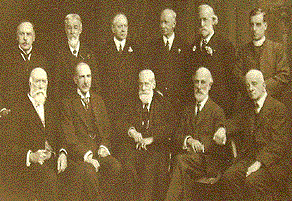
Its web page may look tacky and its name might sound like it was invented by a 6-year-old, but don’t be put off by that: The Ghost Club is the oldest functional paranormal research society in existence. Founded in 1862, the London-based club was formed in the footsteps of its predecessor, a small and exclusive club called The Ghost Society, founded in 1851 by the future Bishop of Durham.
Members of the Ghost Society (and later Club) have included future Prime Ministers, Archbishops, and high-ranking military officials. As a result of its high society origins, the club has always been more interested in observation, quiet research, and civilized investigation than active dabbling with the arcane. They do perform field investigations and publish newsletters like any other paranormal organization, but their manner of conduct is much more akin to a formal club than a bunch of rogue ghost hunters. They boast a well-organized structure of meetings and social events, and have a strict set of rules for their investigations. Thrill-seekers and jokers are strictly forbidden, as are ridiculous tools such as Ouija boards. The Club also politely, but firmly, points out that it doesn’t perform exorcisms or clearances of any kind.
+The Fortean Society
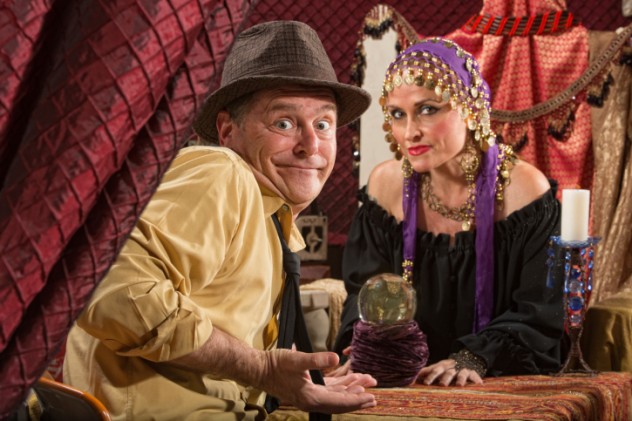
Everyone who has idly browsed paranormal stories has probably encountered the name Fortean Times. The famous magazine (and later website) has been published since 1991, and is essentially the Reader’s Digest of the paranormal. However, the Times is just the tip of the Fortean iceberg.
The original “Fortean” was the Fortean Society, an “international association of philosophers” that was founded in 1931 by Theodore Dreiser and Tiffany Thayer. The society’s goal was to provide a safe haven for all those whose ideas didn’t fit the accepted mold. Anti-vaccinationists, flat earth believers, and political radicals could all find an welcoming home there. Although their ideals were noble and attracted a number of prominent writers, scientists, and spiritualists, Thayer mostly seemed interested in shaming existing scientific norms by asking scientists questions they couldn’t answer and printing gossip about them. Once Thayer died, the Fortean Society slowly disbanded and transformed into the International Fortean Organization (INFO), a rather more reserved organization that focused more on the unexplained and less on shaming the explainers.
The term “Fortean” comes from Charles Hoy Fort, a dedicated skeptic and a keen researcher of unexplained phenomena. Fort often attacked and challenged existing scientists, and Dreiser and Thayer—his closest friend and great admirer respectively—established the Fortean Society in his honor. Ironically, Fort was deathly opposed to the society’s creation. Chances are, he wouldn’t even have attended the foundation dinner, if his friends hadn’t tricked him into it.
Pauli Poisuo also writes for Cracked.com. Why not follow him on Twitter



